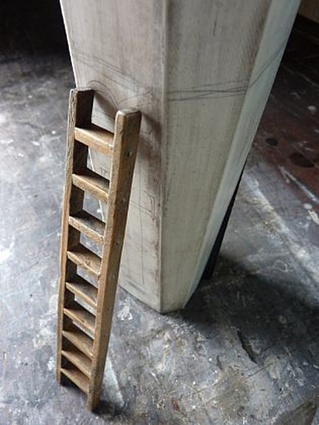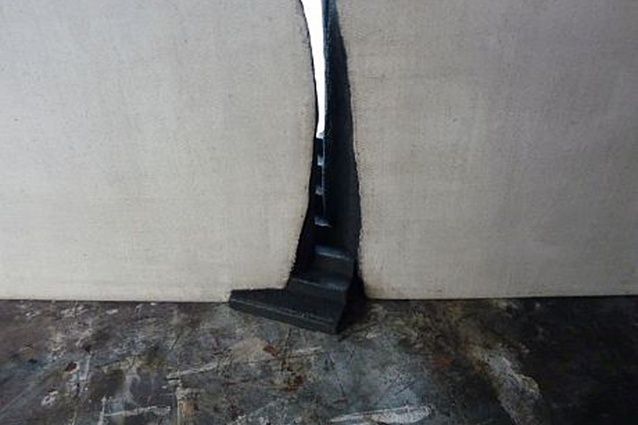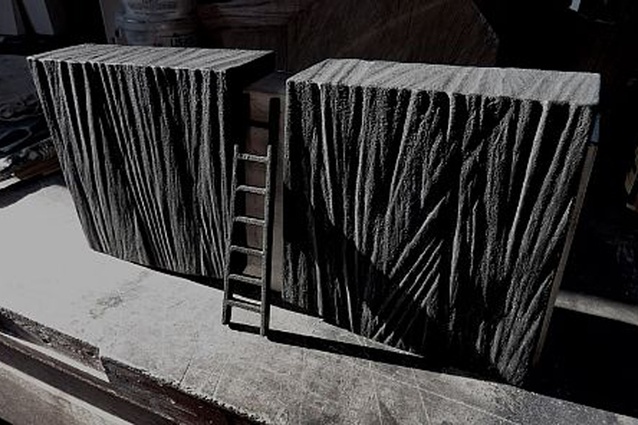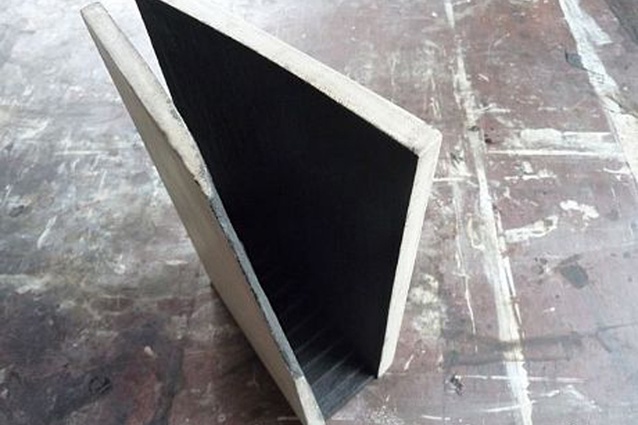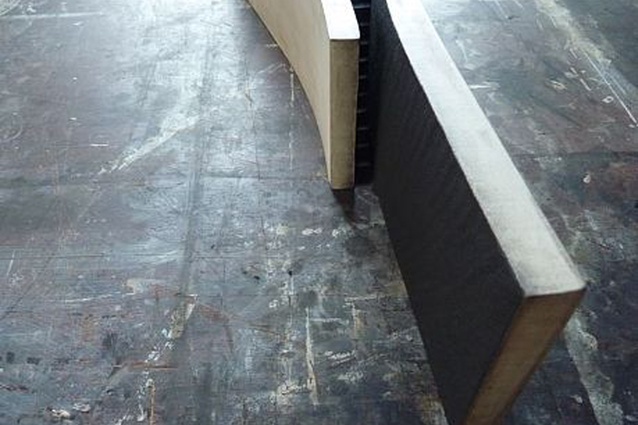A Play ‘and Land’ by Kazu Nakagawa.
Nakagawa’s new series of works explores humanity’s relationship to natural elements and to the land. Seen within the context of a lifelong work, this series is conceived as a play, starting with an overall idea which becomes the prologue - a story about “where we live, the place where we believe”.
The works, which resemble stage-sets, are primarily made of wood. Within this play, Nakagawa assigns himself the roles of playwright, director and set-designer. The story thus only proceeds according to how it is read by viewers. Nakagawa invited Christchurch-based architectural historian, Dr. Jessica Halliday, as a first reader, and his dialogue with her became the first part of this performance.
In the dialogue she describes, “It is noisy in Christchurch. A kind of noise is constant now in the remnants of the city. ………. . Against this noise it is increasingly difficult to find repose. When I saw the photographs of your works, I saw a doorway between this noise and a restful state - a place to pause and either allow or deny reflection.”

